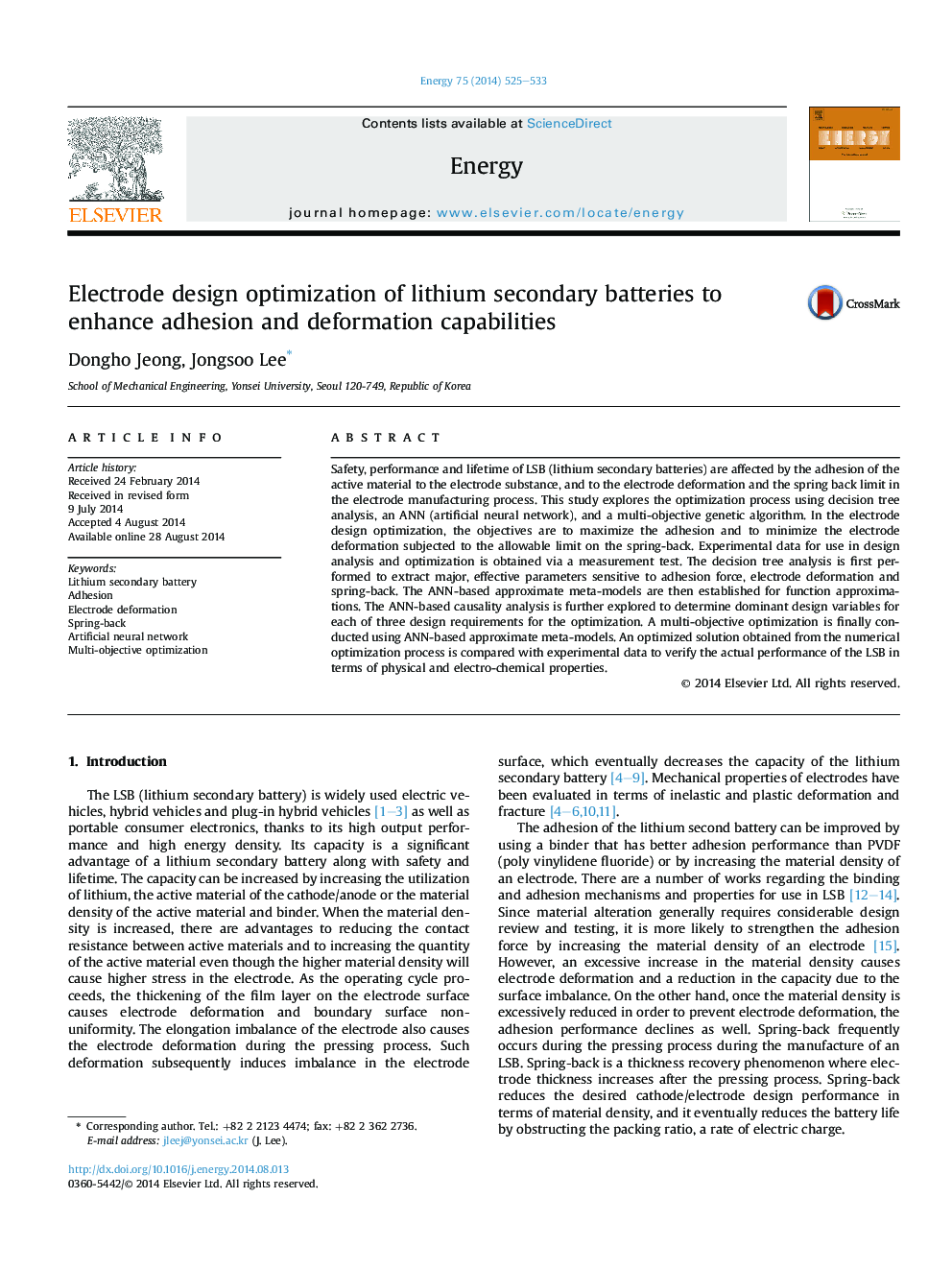| Article ID | Journal | Published Year | Pages | File Type |
|---|---|---|---|---|
| 8076858 | Energy | 2014 | 9 Pages |
Abstract
Safety, performance and lifetime of LSB (lithium secondary batteries) are affected by the adhesion of the active material to the electrode substance, and to the electrode deformation and the spring back limit in the electrode manufacturing process. This study explores the optimization process using decision tree analysis, an ANN (artificial neural network), and a multi-objective genetic algorithm. In the electrode design optimization, the objectives are to maximize the adhesion and to minimize the electrode deformation subjected to the allowable limit on the spring-back. Experimental data for use in design analysis and optimization is obtained via a measurement test. The decision tree analysis is first performed to extract major, effective parameters sensitive to adhesion force, electrode deformation and spring-back. The ANN-based approximate meta-models are then established for function approximations. The ANN-based causality analysis is further explored to determine dominant design variables for each of three design requirements for the optimization. A multi-objective optimization is finally conducted using ANN-based approximate meta-models. An optimized solution obtained from the numerical optimization process is compared with experimental data to verify the actual performance of the LSB in terms of physical and electro-chemical properties.
Keywords
Related Topics
Physical Sciences and Engineering
Energy
Energy (General)
Authors
Dongho Jeong, Jongsoo Lee,
